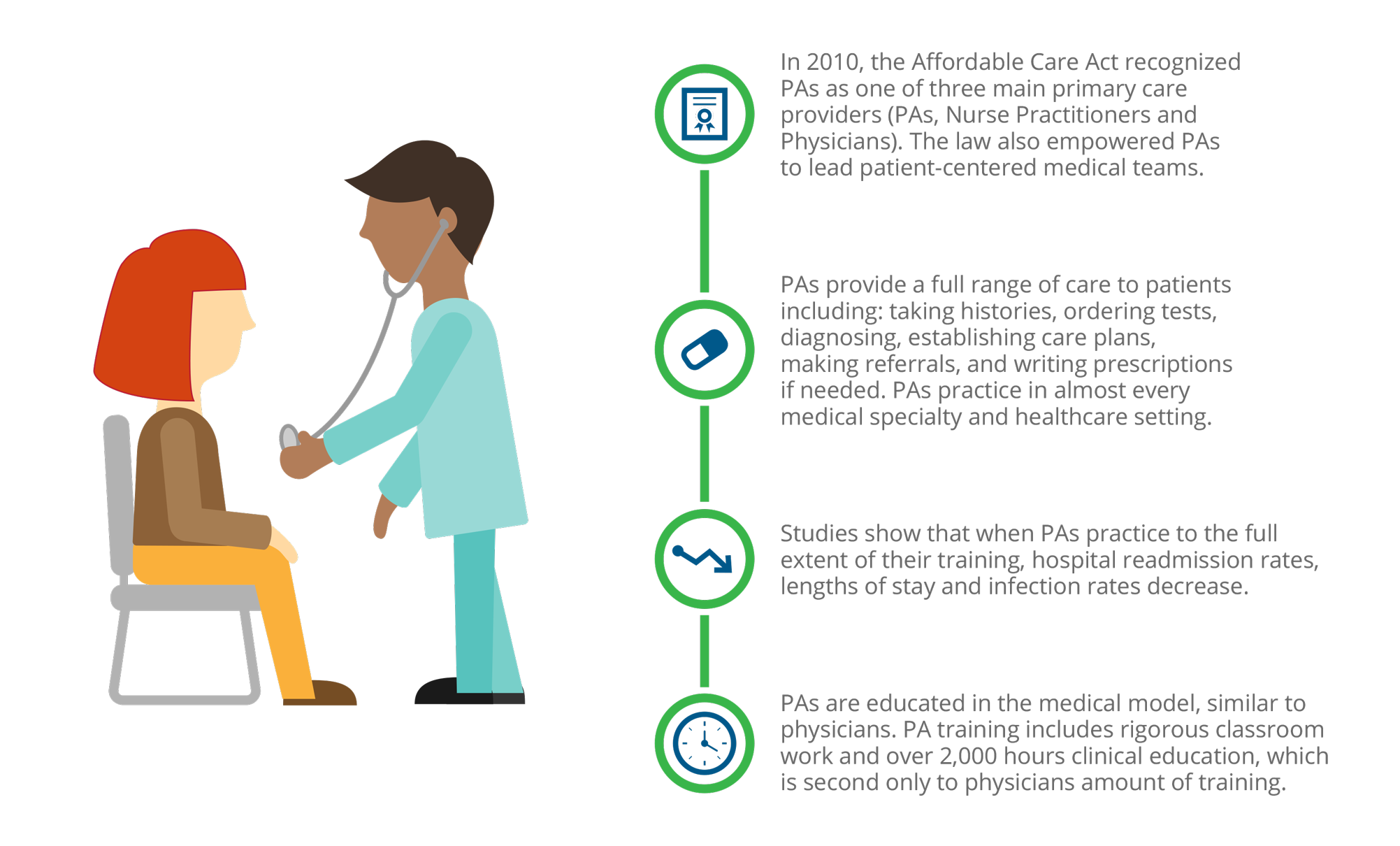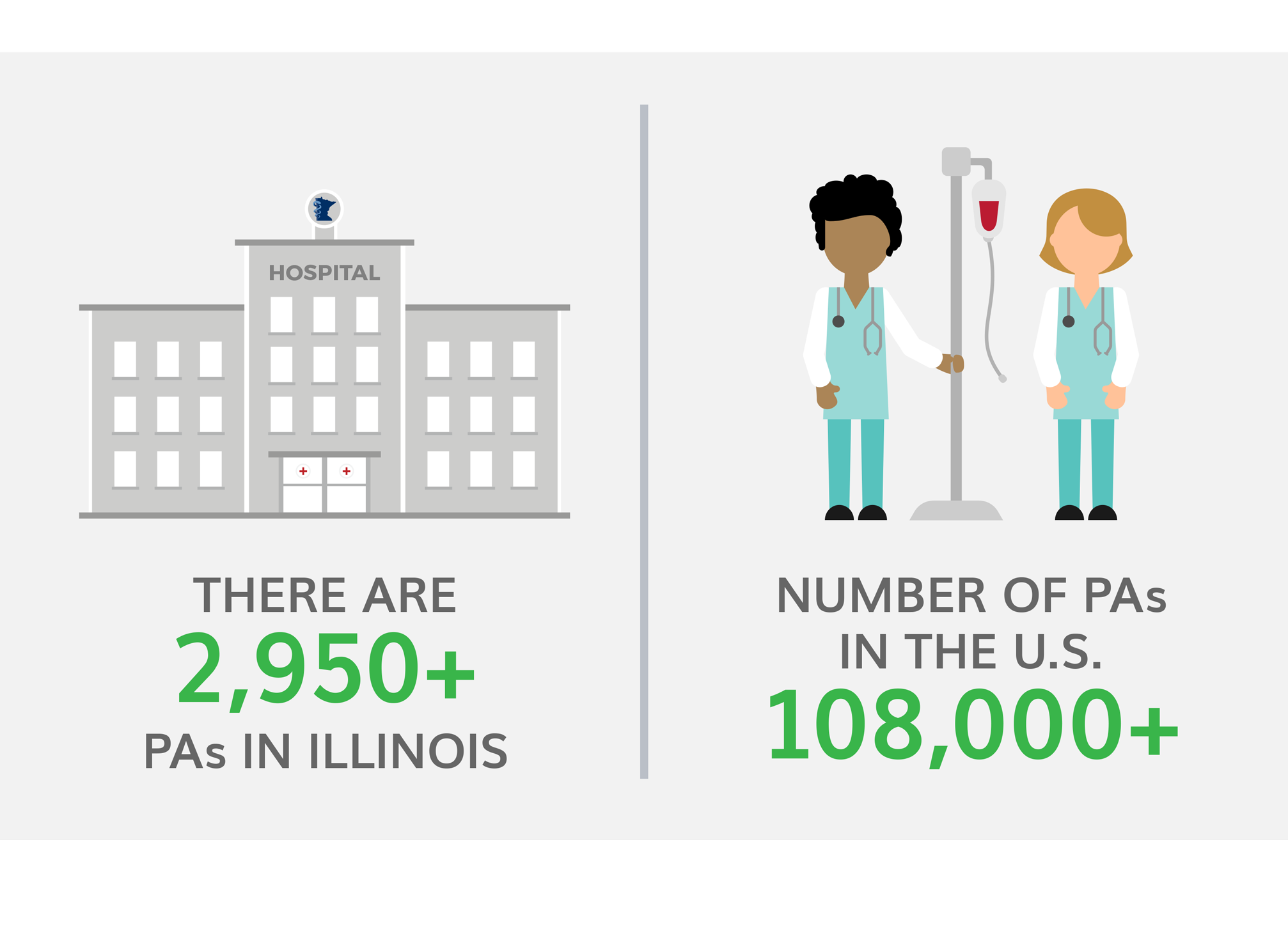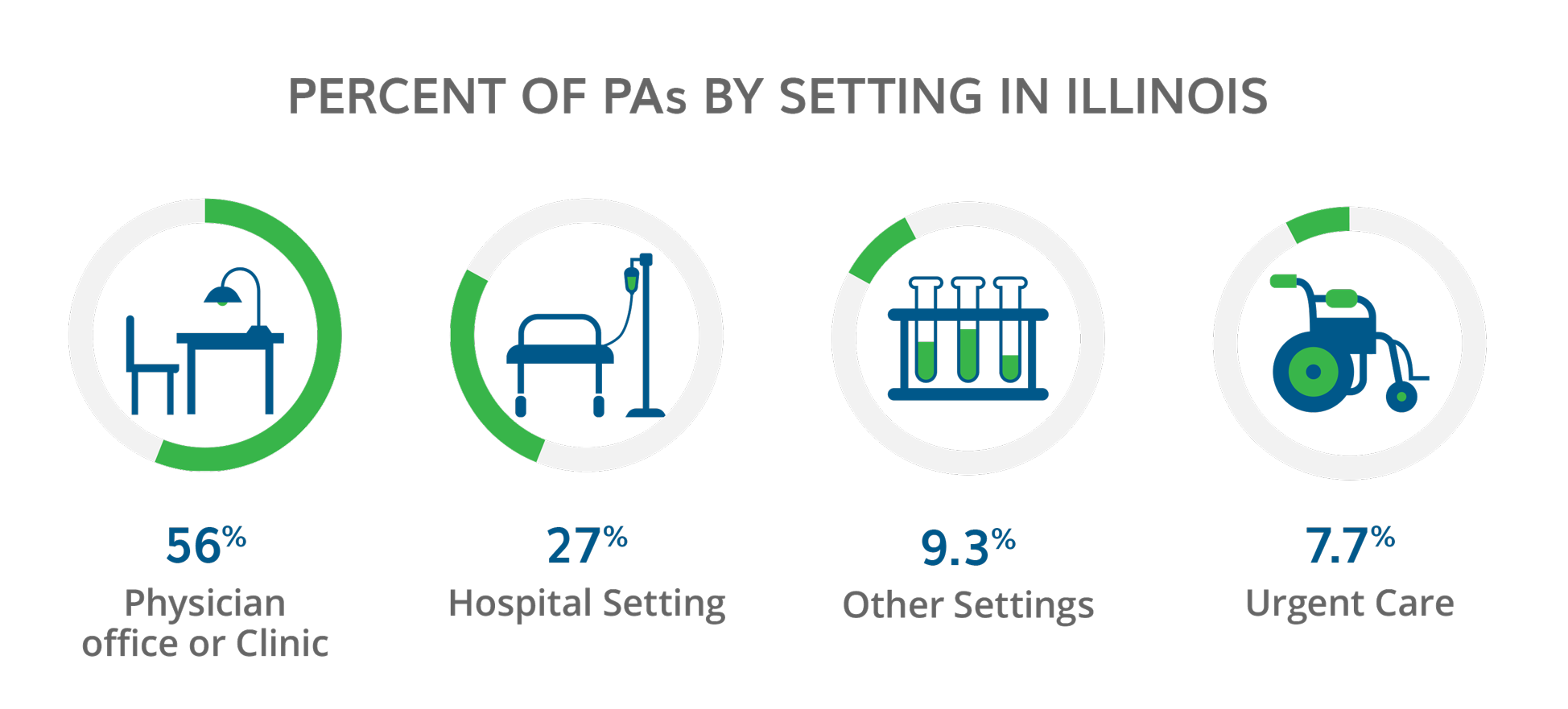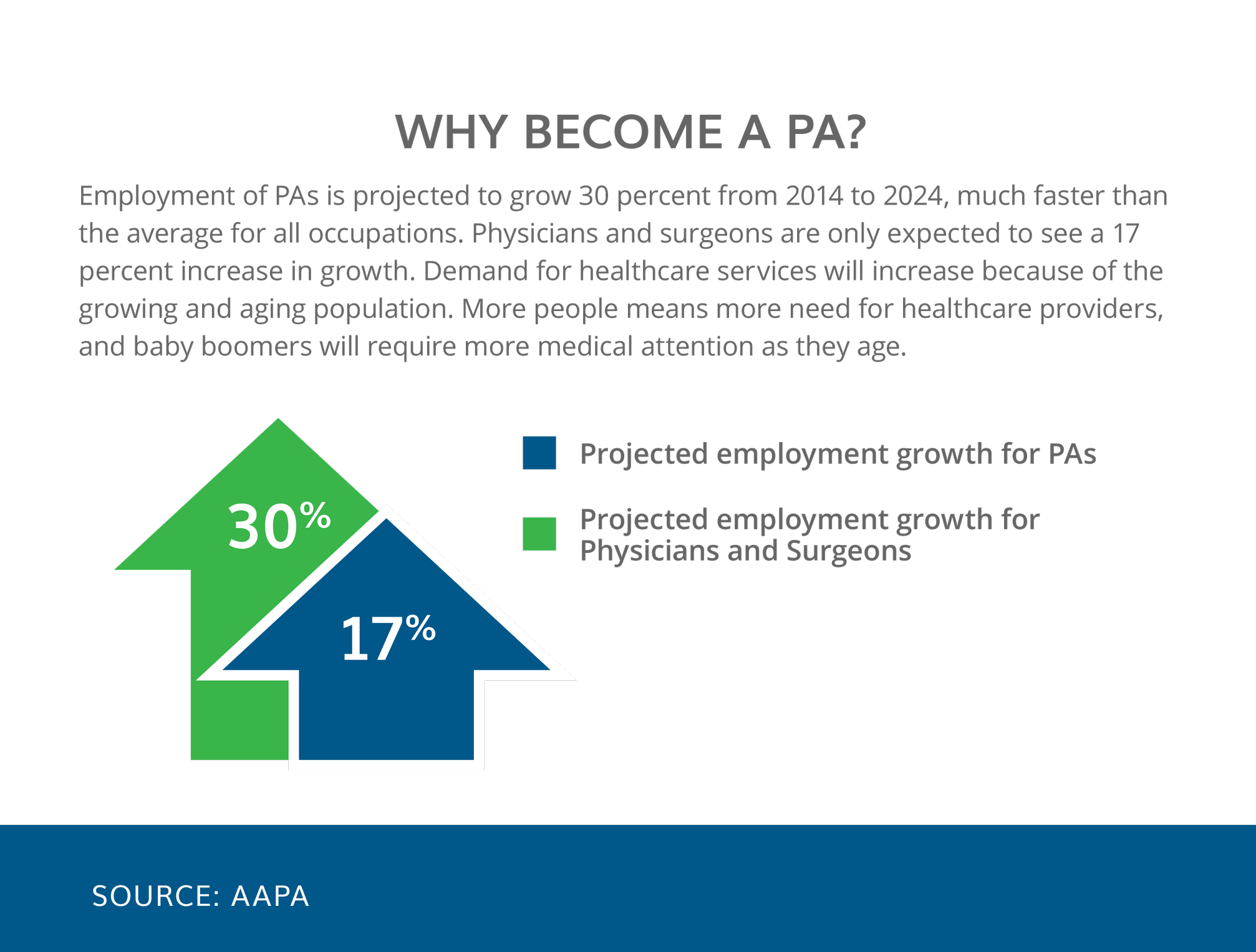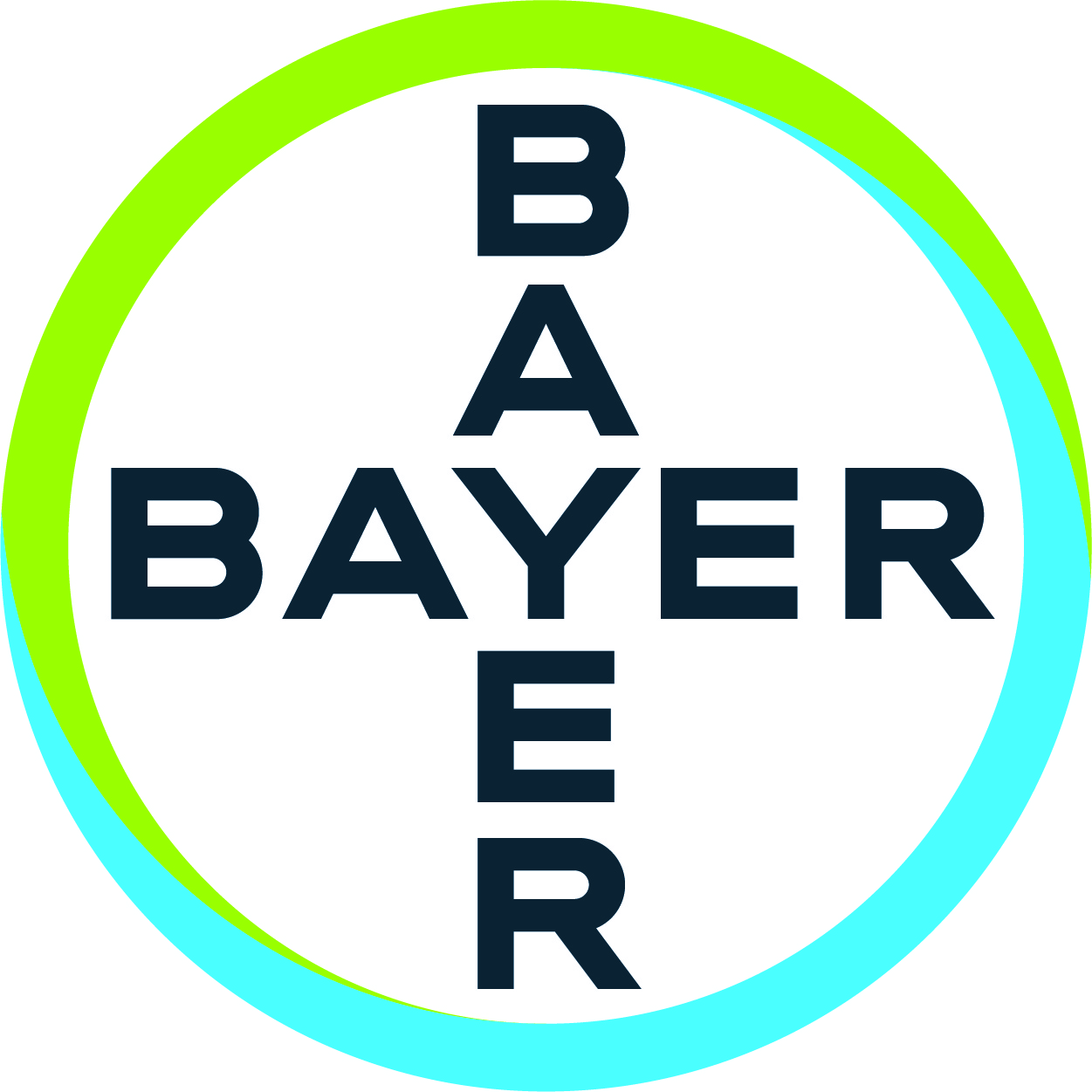The PA profession was founded on the concept of team practice. Working in all medical and surgical specialties, physician-PA teams enhance coordination and quality of care. The healthcare team is effective because of the similarities between physician and PA training. The profession's commitment to team practice and the efficiencies created by utilizing the strengths of each professional in a clinical setting. (American Academy of Physician Assistants)
Practice Scope
A PA’s scope of practice is defined by education, experience, state law, facility policy and the needs of the patients at the practice. Illinois state law allows the scope of the PA’s work to be determined at the practice level to customize team based patient care. PAs are educated in the medical model and practice medicine in every specialty and setting. This flexibility maximizes a patient’s access to care. (American Academy of Physician Assistants)
Board Certification & Licensure
Before they can practice, PAs who graduated from an accredited PA program must pass the Physician Assistant National Certifying Examination (PANCE) which is administered by the National Commission on Certification of PAs (NCCPA). Once they pass the exam, then they must apply for state licensure in the state they wish to practice in. In order to maintain national board certification, PAs must complete a board recertification exam every 10 years and complete 100 hours of Continuing Medical Education (CME) every two years. The “PA-C” after a PAs name means that they are currently certified.
Illinois Department of Financial and Professional Regulations (IDFPR) resources including the PA Practice Act, Administrative rules, Applications for Licensure, Application for Prescriptive Authority, Supervising Physician Forms
The National Commission on Certification of Physician Assistants (NCCPA) is dedicated to serving the interest of the public. We do so with a passionate belief that certified PAs are essential members of the health care delivery team who provide millions access to more affordable, high quality health care. Our vision is to transform the delivery of quality healthcare by certifying qualified PAs through programs that improve patient care while exemplifying a commitment to excellence unparalleled among certifying organizations.
Legislation
State laws and regulations define the physician assistant's scope of practice as well as serve to establish licensure and competency requirements. The responsibilities of the supervising physician are also specified. In Illinois, licenses are obtained through the Department of Financial and Professional Regulation. More information about the Illinois PA Practice Act can be found at: IDFPR. PAs provide physician services which are compensated by insurers, Medicare, Medicaid, SCHIP, and other health care payers through payments to PA employers. PAs may submit claims using their own personal NPI # but they are not directly reimbursed for their services.
Areas of Specialty & Clinical Practice
PAs work in every medical specialty and setting. Some areas include: hospitals, physician offices, rural and urban community health centers, nursing homes, retail clinics, schools and university settings, uniformed services, and other federal government agencies and many more. (American Academy of Physician Assistants)
Impact
Increased utilization of PAs may result in improved distribution and access to health care services, especially in rural and medically underserved areas. Patient waiting times are reduced, and PAs may have more time for questions, counseling and education. This helps to increase the level of patient understanding and compliance, which in turn reduces the cost of health care. Research has demonstrated that PAs provide excellent care and are cost effective ( JAAPA. 2002 Nov;15(11):39-42, 45, 48 passim).
Role
PA responsibilities may include, but are not limited to:
- Obtaining medical histories
- Performing physical examinations
- Providing preventive health services and promoting wellness
- Ordering, assessing the results and sometimes performing diagnostic and laboratory tests
- Diagnosing and treating medical or surgical conditions
- Assisting in surgery
- Providing emergency and critical care
- Prescriptive privileges for all legend drugs and controlled substances II-V
- Patient counseling and patient education
- Making rounds in hospitals and nursing homes.
PAs practice medicine on healthcare teams with physicians and other providers.
Practice Settings
Physician Assistants work in a wide variety of health care environments, including:
- Private and group practice settings
- Hospitals
- Veterans’ Administration and military settings
- Nursing homes
- Community health centers
- Rural health centers
- School based health centers
- Occupational medicine settings
- Correctional institutions
Physicians and health care organizations are continually expanding where and how PAs can best serve the needs of patients and communities.
Education & Training
Physician assistants receive a broad medical education. Because of the close working relationship the PAs have with physicians, PA education is designed to complement medical training. Criteria for admission to a program include previous health care experience and completion of a variety of basic science as well as other general courses. PA educational programs average 24-27 months in length and require the same prerequisite courses as medical schools. Most programs also require that students have at least 3 years of healthcare training and experience. Programs are accredited by the Accreditation Review Commission on Education for the Physician Assistant (ARC-PA) and sponsored by schools of allopathic or osteopathic medicine, colleges and universities affiliated with appropriate clinical teaching facilities and medical education facilities of the federal government. The professional curriculum for PA education includes basic medical, behavioral, and social sciences; patient assessment and clinical medicine; supervised clinical practice; and health policy and professional practice issues. Supervised clinical practice experiences for students include more than 2000 hours of rotations in emergency medicine, family medicine, internal medicine, general surgery (including operative experiences), geriatrics, pediatrics, prenatal care and women’s health, psychiatry and/or behavioral medicine. Although PA Programs may confer a variety of degrees to their graduates. PA education is conducted at the graduate level. Consequently, a bachelor’s degree and clinical health care experience are prerequisites to most programs. Upon graduation, physician assistants take a national certification examination developed by the National Commission on Certification of PAs in conjunction with the National Board of Medical Examiners. To obtain a license in Illinois, a PA must pass this exam. After passing the exam, the Illinois PA uses the credential PA-C. To maintain their national certification, PAs must log 100 hours of continuing medical education every two years and pass a national recertification exam every six years. PA education continues throughout a provider’s career with mandatory continuing medical education as well as the ongoing professional interactions between health care providers. (American Academy of Physician Assistants)


